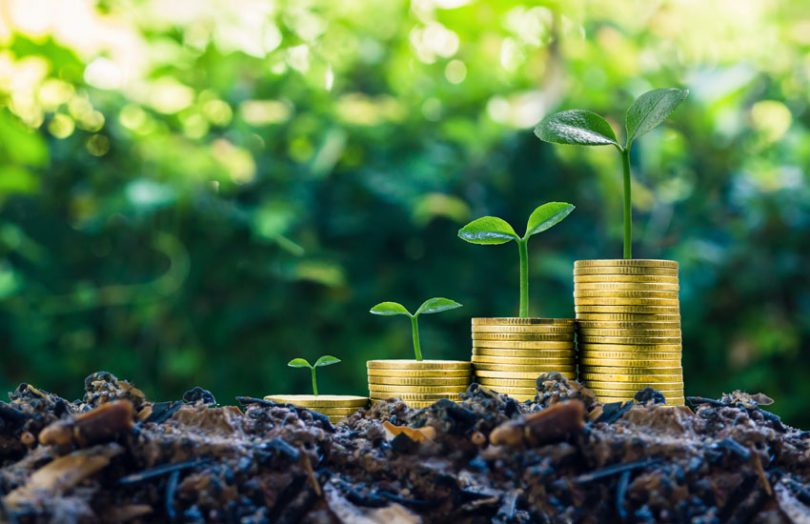Today sees the launch of the Green Assets Wallet, a blockchain solution that aims to track the impact of green bonds. The initiative was financed by the German government and run out of Sweden with one of the first-ever green bond investors Swedish bank SEB as a leading participant alongside several other banks and organizations which were involved in the design.
The project was described as “not a blockchain used to transfer money via some cryptocurrency, but a blockchain used as a trusted database that holds documents and impact reports.”
Many investment initiatives that have a green or environmental impact are funded through debt. Green bonds are required to provide a report about their impact, a form of accountability to the investors. That reporting is an additional administrative overhead for the issuers, and the Green Assets Wallet aims to help with this. The green bond market is experiencing rapid growth, and according to the International Finance Corporation (IFC) and other market participants, the demand from investors currently exceeds the supply.
“With the Green Assets Wallet we are using technology to on the one hand [for issuers] inject efficiency, to cut costs for issuers and help scale the supply of green debt,” said Cecilia Repinski, Executive Director of Stockholm Green Digital Finance, the project initiator. “And on the other hand, inject transparency and trust to make a wider range of investment needs accessible to investors.”
Given the structured nature of the platform and reduction in administration, it will also empower smaller issuers to issue their first green bonds.
Green bond growth
Before green bonds, environmental investing involved excluding companies from investment portfolios as opposed to actively funding green projects. While the early green investments started with a desire to help with climate change, nowadays the aim is to deliver on the Paris Climate Agreement and the Sustainable Development Goals.
In the first quarter of 2019, green bond issuance was $47.9 billion with almost 80% from the developed world and the balance in emerging markets, according to Climate Bonds. That’s an impressive figure but less than 1% of total bond issuance.
Between 2012-2018 China accounted for 78% of emerging market bond issuance of $140 billion, and ICBC was the most active bank. And the Chinese bank also participated in the design of the Green Assets Wallet.
Emerging markets are critical participants for green bonds because the IFC estimates that they represent 82 percent of nations that are most vulnerable to climate change. Hence a significant slice of the investment opportunities is likely to be in emerging markets going forward.
Moreover, a 2018 research paper by IFC predicts that the investment potential of the sector by 2030 is as much as $29.4 trillion.
Bridging the impact reporting gap
At the same time, some bemoan the poor levels of impact reporting. Writing in the Financial Times, an analyst stated that “only a third of green bonds issued in the past three years met our three-stage criteria for sustainable issuance.”
“Compiling and comparing different impact reports can be complicated and time-consuming,” said Ashley Schulten, Head of Responsible Investing for Global Fixed Income at BlackRock. “We see this platform as a way to simplify this process for investors. As the green bond market has led the way for other types of environmental financial products, we hope that this foray into using blockchain for impact metrics can be the start of mainstreaming work around digital tokens for environmental impact and natural capital.”
A critical component in the reporting is the third party assessments. Two of the relevant organizations that participated in the Green Asset Wallet were the Centre for International Climate and Environmental Research (CICERO) and China Energy Conservation and Environmental Protection Group (CECEP).
Additional monitoring comes from satellite imagery where it’s possible to monitor forests, detect deforestation and the construction of a solar plant. Potentially solar projects could enable the power they generate to be automatically monitored.
Many issuers tend to have additional projects which also need funding. So the historical performance will also be stored on the blockchain.
The project was initiated by Stockholm Green Digital Finance, and financed by the German Federal Ministry for Economic Cooperation and Development. Public blockchain Chromia from ChromaWay is the underlying platform being used.
The initiative is being incorporated as an independent public-private company with Stockholm Green Digital Finance as the main shareholder.
It’s not the only blockchain solution targeting green finance. In September the Sustainable Digital Finance Alliance published a whitepaper about blockchain green bonds. And this week another initiative “Proof of Impact” announced a Series A round led by Franklin Templeton.
Meanwhile, the demand for the kind of reporting produced via the Green Assets Wallet is set to expand. “Green bonds have catalyzed a change in investor behaviour,” said Heike Reichelt Head of Investor relations at the World Bank in a recent video.
“They want to know where their money is going, but not only for labelled bonds that they’re buying. So not only for green bonds or social bonds or sustainable bonds. But they’re asking questions about everything they’re investing in. And I think that’s going to be the capital markets of the future.”






